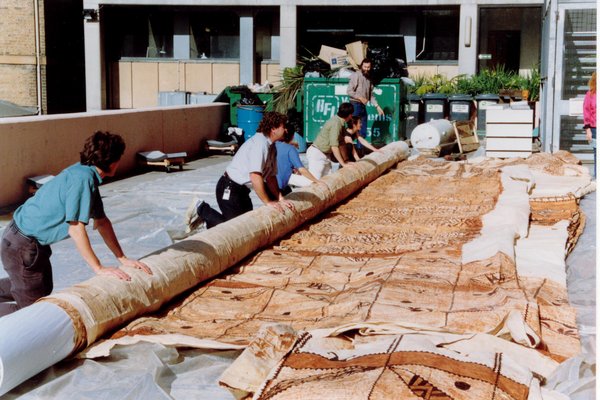157 years of Australian Museum science at your fingertips

Records of the Australian Museum, a composite image.
Image: Shane McEvey© Australian Museum
In October 2008 the Australian Museum's Scientific Publications Unit began digitising the 157-year legacy of science published to date in the journals Records of the Australian Museum, Australian Museum Memoirs and Technical Reports of the Australian Museum.
By October 2009 researchers around the world will have full access via the Australian Museum website to all the knowledge contained in this vast 34,000-page library.
Improving access and functionality
Finding information in the online journals is extremely fast and simple. The pages of text are stored in fully searchable PDF (portable document format). A reader can enter any word or phrase (such as 'island' or 'fruit fly') and in a split second find all occurrences of the search word in the text.
This level of access is made possible because each page has been scanned using OCR (optical character recognition) - a process that preserves the original appearance of the page exactly while adding an additional layer of searchable text to the electronic file.
Functionality of the text is being further enhanced using hyperlinks, which are links embedded in the text that can transport the reader immediately to other online works. Each of the 1525 PDFs (one for each of the scientific publications) has been registered with a unique digital object identifier (DOI) to optimise this functionality.
A wealth of knowledge about nature and cultures
The extent of the Museum's contribution to the exploration of nature and cultures in Australia is nowhere more tangible than in the thousands of pages we've published throughout last century and in the last decade of the nineteenth century. For example:
- numerous bulletins of drawings and observations of Indigenous northern Australian cultures by Walter Roth (c. 1908)
- the discovery and taxonomic work on hundreds of Australian Mollusca by Charles Hedley (c. 1900-1920s)
- the detailed classification of Australian spiders by William Joseph Rainbow (c. 1900-1910)
- archaeological and anthropological studies of Indigenous Australians by Frederick McCarthy (c. 1940-1960s) and, more recently,
- the contribution to our knowledge of the tens of thousands of species of flies that occur in Australasia (David McAlpine, 1950s to present) and diversity of amphipods in marine habitats of surrounding oceans (Jim Lowry, 1980s to present).
All these scholarly works are now part of the cross-linked, cross-referenced, interconnected hypertext of the twenty-first century scientific literature. Have a look:
Roth, 1909, Rec. Aust. Mus. 7(4): 189-211
Hedley, 1901, Rec. Aust. Mus. 4(1): 22-27
Rainbow, 1913, Rec. Aust. Mus. 10(1): 1-16
Lowry & Stoddart, 1992, Rec. Aust. Mus. 44(2): 185-245












